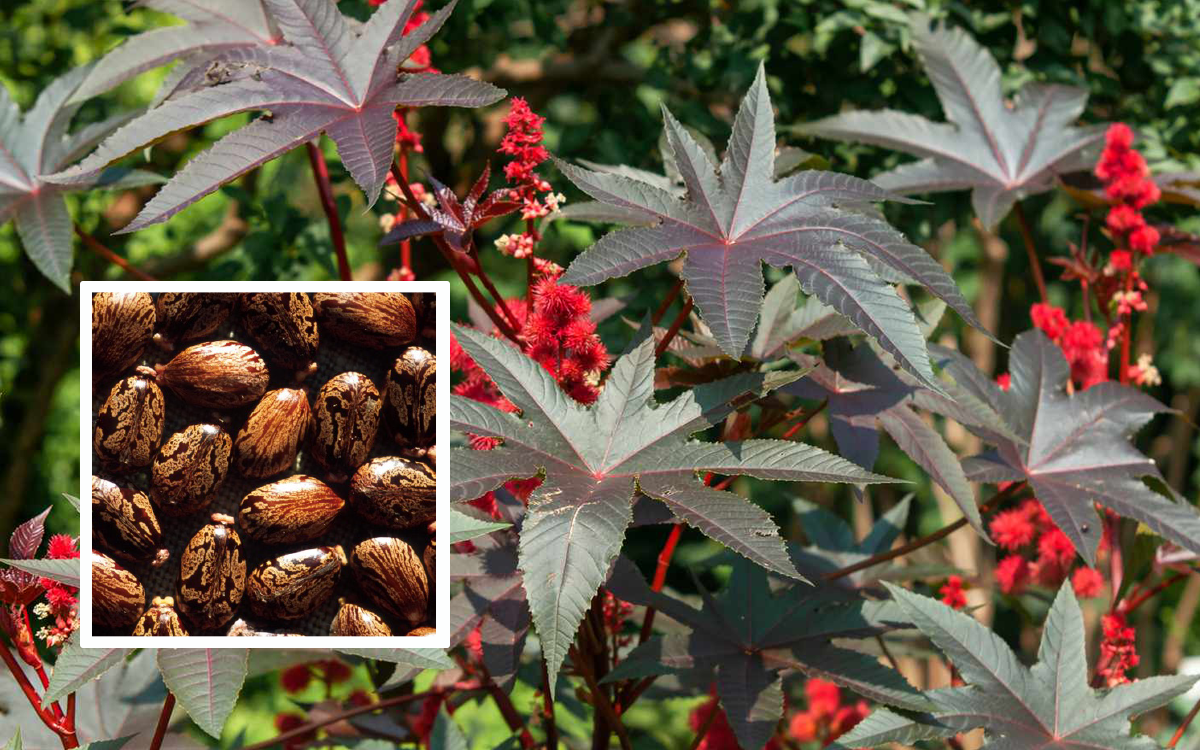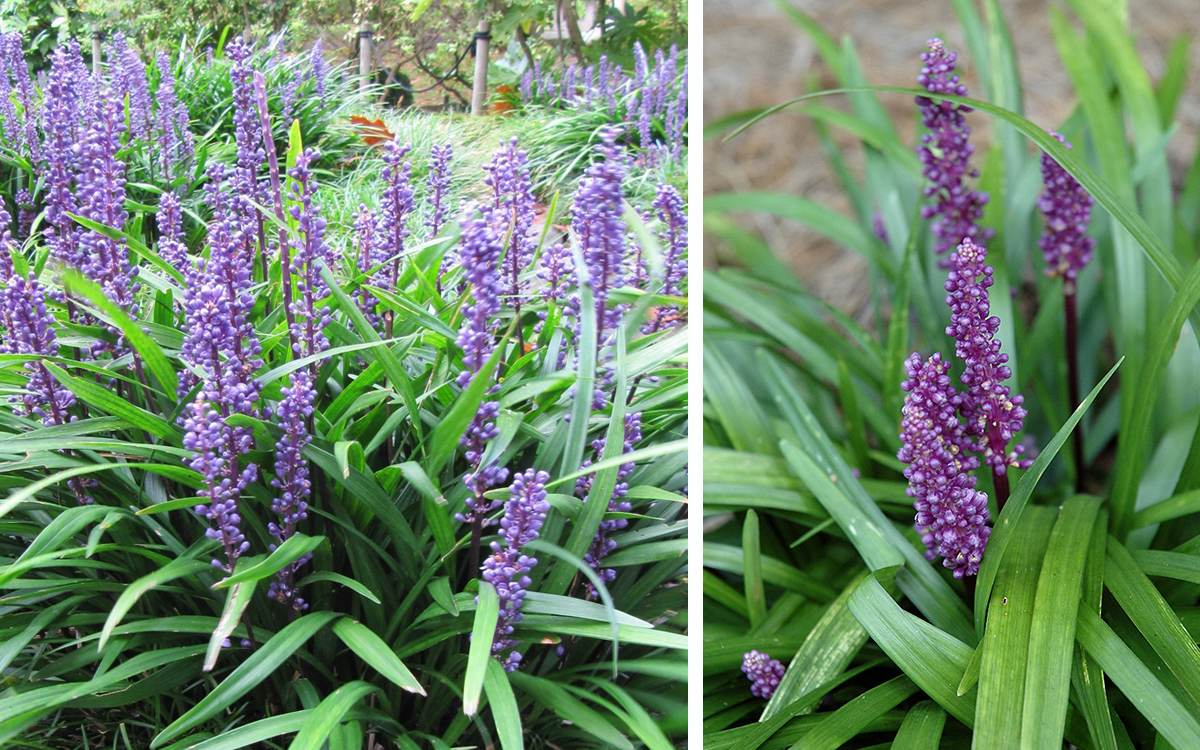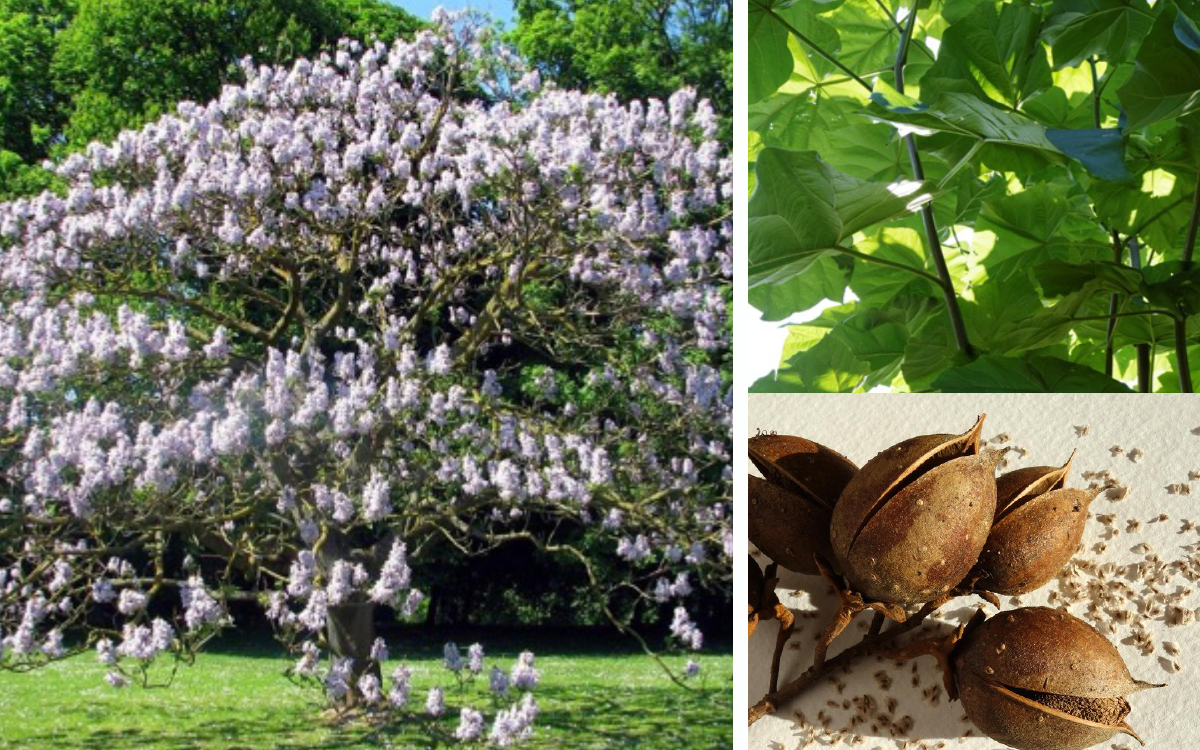Welcome to the Toxic Plant Garden
The Toxic Plant Garden is a living display on the School of Veterinary Medicine campus of common plants poisonous to animals. The outdoor space is available for anyone to self tour.
History
The garden began as pet project of UC Davis Professor Murray Fowler in 1970. Dr. Fowler was considered to be the “father” of Zoological Medicine—a category he named upon developing the first veterinary program (at UC Davis) in the country to address the needs of non-domestic animals. Dr. Fowler was an animal advocate and gifted clinician who supported wildlife conservation. He served as the Sacramento Zoo's first dedicated veterinarian.
Read Dr. Fowler’s statement about creating the garden
Soon after moving to the new Veterinary Medical Teaching Hospital (VMTH) in 1970, I was able to talk the hospital director, Dr. Robert Cello, into converting a small lot on the southwest corner of the VMTH complex to a poisonous plant garden. The lot already had a small almond tree, and oak tree and an oleander bush growing on the lot. I was able get a special fence erected with a locked gate to avoid having any animal from gaining access to the garden. I had no support for planning and maintaining the garden so it was pretty much up to me to design the garden and keep it going. I was able to enlist the help of several students over the years.
I designed a pathway system and prepared beds for various groups of plants. I had been collecting seeds of poisonous plants ever since I started working at the University. I constructed a small pond in the center of the garden with an arbor over the pond. I had wisteria and other vines growing over the pond. The aquatic environment allowed the growth of moisture and shade loving plants, such a water hemlock to flourish. I even transplanted some perennial plants from the surrounding area to the garden. It wasn't too many years until the school had a respectable poisonous plant garden. Students had access to the garden at all times. It was also used for field trips and to help supply live specimens for classroom instruction. It took a lot of weeding, pruning, watering and replanting of annuals to keep it going.
When the anatomy/pathology buildings were designed and being built in 2006, Dr. John Pascoe expressed a desire to include a poisonous plant garden on the north side of the anatomy building. I was retired by then and Mick Mount was the clinical toxicologist on the scene. He submitted an extensive list of plants that he felt should be included. I reviewed the list and tried to pare it down to the more likely plants to be encountered by livestock and pets. After the construction was completed the new garden began to materialize. A Staff Research Associate in the Department of Microbiology was recruited to care for the collection. He has done a commendable job. He has labeled the plantings and keeps them groomed. It is a pleasant place to take a stroll.
—Dr. Murray Fowler

Plants Listing
You will find the following plants in the garden, listed in common name alphabetical order.

Aloe (Aloe nobilis)
Toxic to dogs, cats, horses
Aloe contains anthraquinone glycosides which are generally not considered to be a serious threat. Symptoms of poisoning include vomiting, diarrhea, tremors, change in urine color, depression and anorexia.

Angel's Trumpet (Brugmansia suaveolens)
Toxic to all animals
Angel's Trumpet contain alkaloids most prominently in the flowers, but also in the berries, leaves, and bark. Angel’s trumpet can be hallucinogenic. It causes restlessness, pupil dilation and increased heartbeat in humans. There is minimal research on livestock. It rarely causes seizures and death, but it has been known to happen.

Asparagus Fern (Protasparagus densiflorus)
Toxic to dogs, cats, horses, livestock
The plant has prickles on the stems which can produce irritants, along with its sapogenins. Minor skin irritation lasts for a few minutes. Redness, swelling, and blisters follow contact with the plant and its sap. Ingesting berries causes mild gastrointestinal upset.

Box Honeysuckle (Lonicera nitida)
Toxic to dogs, cats, horses, livestock
The plant has prickles on the stems which can produce irritants, along with its sapogenins. Minor skin irritation lasts for a few minutes. Redness, swelling, and blisters follow contact with the plant and its sap. Ingesting berries causes mild gastrointestinal upset.

Calla Lily - White (Zantedeschia aethiopica)
Toxic to dogs, cats, horses, livestock
All parts of the plant, including leaves, roots, sap, fruit, and flowers are toxic. Calcium oxalate is spread throughout the plant, which are microscopic crystals released when the plant is handled or ingested. It also contains protein digesting enzymes which may cause an inflammatory reaction. Symptoms of calla lily ingestion in cats and dogs include oral irritation, swelling, drooling, vomiting, diarrhea, and difficulty swallowing. Contact dermatitis, hoarse voice, and blocking of the windpipe may occur.

Cape Plumbago (Plumbago auriculata)
Toxic to dogs, cats, horses, livestock
All parts of the plant are poisonous and contain plumbagin, which is a quinone. Causes extremely severe skin irritation. After contact, the skin has redness and blisters.

Castor Bean (Ricinus communis)
Toxic to cats, dogs, horses, cows, poultry, rabbits
Castor beans, along with the foliage, are highly toxic due to its ricin content. The oil made from castor beans is not poisonous as the ricin is insoluble in oil. Ricin is known to be one of the most toxic substances. Horses are poisoned by 0.01% of their body weight by the seed. Cattle, sheep, and pigs are poisoned by 0.2% by body weight. Poultry are poisoned by 1.4%.There is a “lag period” from hours to days where clinical signs are not present after ingestion. Gastrointestinal symptoms, halting of rumination, dullness, and weakness are common symptoms across livestock species. Horses in particular sweat, tremble, and experience proprioceptive issues. Horses additionally experience intense heart contractions which shake the entire body. In poultry, dropping wings and ruffled feathers occur, with grey wattles and combs, and cessation of egg production.

Cherry Laurel (Prunus laurocerasus)
Toxic to cats, dogs, horses, cows, pigs
Contains cyanogenic glycosides (amygdalin). It is palatable to most animals, and has the most recorded instances of poisoning in horses and dogs. It is the most toxic of the Prunus family due to the toxicity of its foliage and pits. Signs of poisoning are abdominal pain and vomiting.

Chinese Holly (Ilex cortuna)
Toxic to cats, dogs, horses
Contains saponins in the berries, which is a gastrointestinal irritant. Also has ilicin, ilexanthin and ilicic acid. Tannin plus cyanogenic glycosides as well. Causes discomfort after eating in all mammalian species. Diarrhea and vomiting are the most common symptoms, with symptoms usually not being life-threatening or serious.

Chinese Wisteria (Wisteria sinensis)
Toxic to cats, dogs, horses
Contains lectins and wisterin. After ingestion, pets experience vomiting, blood in vomit, diarrhea, and depression.

Common Boxwood (Buxus sempervirens)
Toxic to cats, dogs, horses, cows, poultry
Contains steroidal alkaloids and other active toxic principles. In horses, 1.5 lbs of the plant is considered a lethal dose, which is generally 0.15% of bodyweight. Ingestion of the common boxwood by sheep, horses, pigs, and cattle results in death. Symptoms include gastroenteritis and bloody diarrhea. If a lethal dose is consumed, death occurs quickly via respiratory failure.

Common Privet (Ligustrum vulgare)
Toxic to cats, dogs, horses, cows, sheep
Poisoning is generally considered to be rare, but still dangerous due to the plant’s terpenoid glycosides. Recorded cases of poisoning in horses, cattle, and sheep – with an entire flock of sheep dying due to the shrub. Causes gastric irritation, abdominal pain, vomiting, and purging. Death can occur within a few hours or days after ingestion.

Bearberry Cotoneaster (Cotoneaster dammeri)
Toxic to cats, dogs, horses
Low risk of toxicity towards humans and animals. For livestock, horses, and small animals, symptoms include general gastric upset like vomiting (small animals), diarrhea, and abdominal pain.

Daffodil (Narcissus)
Toxic to cats, dogs, horses, cows, sheep
The bulbs contain compounds which produce severe symptoms, such as alkaloids (lycrorine), which contain high amounts of nitrogen, causing gastrointestinal symptoms. Poisoning has been seen in humans from small dosages, and historically in livestock when bulbs were fed as an emergency feed during wartime. Known to contain grayanotoxins narcissine, galantamine and scillitoxin. Signs of poisoning include gastroenteritis, vomiting, and convulsions.

Daylily (Hemerocallis hybrida)
Toxic to cats
Causes kidney damage. All parts of the plant are toxic, and small amounts can be fatal. Contains pentacyclic terpenoids. Signs of poisoning include gastrointestinal upset, lethargy, dehydration, thirst, seizure, kidney failure, and death.

Dutch/German Iris (Iris germanica)
Toxic to cats, dogs, horses
Toxic to all species, Iris germanica has an irritant which produces gastroenteritis if consumed in large enough quantities. It can be fatal in calves, and has caused death in lab animals. The toxic component of the Dutch (German) iris is irisin, found in the highest concentrations within the plants bulbs. Signs of poisoning include shortness of breath, vomiting, salivation, dehydration, immediate abdominal pain, violent bloody diarrhea, burn like sores on the mouth have been recorded. Mild to moderate symptoms occur for a few hours to a day, but can cause death in serious cases.

English Ivy (Hedera helix)
Toxic to cats, dogs, horses
Toxic due to a saphonic glycoside. Symptoms include purging after eating, general excitement, labored breathing, and coma. Cattle are able to recover after a few days, but it is significantly more toxic to other animal species.

Geranium (Geranium pelargonium)
Toxic to cats, dogs, horses, rabbits
Contain geraniol and linalool. Signs of poisoning include include vomiting, anorexia, depression, skin irritation, and general gastrointestinal upset.

Heavenly Bamboo (Nandina domestica)
Toxic to cats, dogs, horses, birds
Strongly cyanogenic and poses the most risk to ruminants who may graze on the plant. Due to their frequent appearance in gardens, they are also a risk to small animals. Almost sudden distress, with symptoms beginning during ingestion. Weakness, incoordination, hemorrhage, labored breathing have been recorded. Inability to stand, with periodical paddling of the legs while lying with tetanic seizures happening in 5-15 minute intervals. Either death or recovery occurs after the cyclical seizures, which may finish after a few hours.

Hop Bush (Dodonaea viscosa)
Toxic to cats, dogs
A laxative due to its glycosides. Additionally, it has purgative effects especially when the bark is consumed. Poisoning is rare but has occurred.

Italian Buckthorn (Frangula alaternus)
Toxicity not determined
Despite being in the garden, this plant is not known to be significantly toxic. Contains saponins. In small animals, diarrhea, fever, and vomiting occurs. Symptoms are generally mild, and livestock are able to tolerate the plant.

Japanese Aucuba (Aucuba japonica)
Toxic to cats, dogs
Contains aucubin, which is a poisonous glycoside. The leaves and berries carry the poisonous part of the plant. In small animals, diarrhea, fever, and vomiting occurs. Symptoms are generally mild, and livestock are able to tolerate the plant.

Japanese Barberry (Berberis thunbergii)
Toxic to cows, pigs, sheep
Produces protoberberine alkaloids which relax smooth muscle, causing a decrease in blood pressure and inhibits some neurotransmitters or enzymes within the body. It also contains sambunigrin, a cyanogenic glycoside. Cattle, hogs, and sheep show occasional poisoning. Cows show facial swelling, salvation, anorexia, congestion, lacrimation, and diarrhea. Hogs died when in contact with the Japanese barberry, which usually does not cause death in other species. Most common signs are mild to moderate digestive distress, like nausea, vomiting, and diarrhea.

Japanese Privet (Ligustrum japonicum)
Toxic to cats, dogs, horses
Berries are purgative and can cause an intoxicating effect. The plant contains glycosides, causing the toxicity. The entire plant is toxic with the berries posing the most risk. Causes vomiting and diarrhea. Small animals have been reported to experience severe digestive problems but recovered. Horses and cattle died within a day or two after ingestion.

Japanese Wisteria (Wisteria floribunda)
Toxic to cats, dogs, horses, sheep, goats
Seeds are toxic due to lectin and wisterin glycoside. In all species, mild symptoms occur with gastroenteritis, diarrhea, and depression. Vomiting occurs in dogs and cats. Blood can sometimes be vomited after ingestion. Abdominal pain is common and signs of clinical dehydration should be watched.

Kentucky Coffee Tree (Gymnocladus dioicus)
Toxic to cats, dogs, horses, cows
The primarily poisonous part of the tree is its foliage due to alkaloids. Severe nervous and digestive system irritation after ingestion of foliage from Gymnocladus dioicus has been noted. Animals have been known to experience symptoms even after eating from a water source with a branch in it. The effects are akin to narcosis. Death has happened in sheep a day after ingestion.

Lemon Verbena (Aloysia triphylla)
Toxic to cats, dogs, horses
Contains aucubin, a glycoside, which causes intense symptoms. In large animals, symptoms include sweating, loss of proprioception, ataxia, and loss of muscle tone in the legs. Paralysis and kidney failure have been reported.

Lenten Rose (Helleborus orientalis)
Toxic to cats, dogs, horses, rabbits
Considered highly toxic but has only a few documented cases of poisoning. The plant has glycosidic principles which produce gastrointestinal and neurological issues when ingested. Causes gastric distress and neurological abnormalities.

Lily of the Nile (Agapanthus africanus)
Toxic to cats, dogs
Contains saponins and alkaloids which are known to cause digestive issues. Generally toxic to all pet species, the plant is poisonous by ingestion and can cause skin irritation. Symptoms are irritation of skin and eyes, ulceration around the mouth and gastrointestinal upset.

Lily Turf (Liriope muscari)
Toxic to cats, dogs, horses
Lily turf is not known to be toxic itself, but is related closely to known toxic plants. It most likely carries toxic substances in the berries like methyl eugenol, along with other essential oils.

Lobelia (Lobelia laxiflora)
Toxic to cats, dogs, horses, cows, sheep, goats, small rodents
Contains lobeline, which has been related to nicotine. After continuous eating over a long period of time, or if a large quantity is eaten, symptoms begin. In large animals, diarrhea, nasal discharge, extension of the neck, and drooping of the ears occur. Depression, loss of appetite, labored breathing, incoordination, coma, and death have been reported. Death is most likely due to cardiopulmonary collapse.

Oleander (Nerium oleander)
Toxic to cats, dogs, horses, cows, sheep, goats, rabbits, birds
Extremely toxic in all parts, dried or fresh, in all classes of livestock due to cardiac glycosides. 0.005% equine and cattle bodyweight of oleander proves to be poisonous. Similarly, poisoning occurs with 0.015% of body weight consumed in sheep. Symptoms include gastroenteritis and cardiac stress due to oleander’s glycosides. The animal’s pulse increases, extremities become cold, and mydriasis occurs. The mouth becomes discolored, and the subject sweats and refuses to eat. There is nausea and vomiting, with blood in the feces. Poisoning occurs after several hours of ingestion, and death occurs within a day.

Oregon Holly-Grape (Mahonia aquifolium)
Toxic to livestock
Generally considered to be non-toxic in most species, the plant contains berberine & oxyacanthin alkaloids which are harmful towards livestock. Can cause upset stomach.

Persian Violet (Mahonia aquifolium)
Toxic to cats, dogs, horses
The roots contain terpenoid saponins causing the toxic effects. The plants also are known to have a particularly foul taste. Generally not considered poisonous to livestock, Cyclamen coum is toxic to cats, dogs, and horses. It causes salivation, vomiting (in small animals), diarrhea, skin irritation, colic, abnormal heart rhythm, seizures, and in severe cases death.

Potato Vine (Solanum jasminoides)
Toxic to cats, dogs
Contain glycoalkaloids. Toxicity varies depending on the part and age the plant. Nervous system effects in poisoned animals are apathy, drowsiness, salivation, dyspnea, trembling, progressive weakness, and paralysis. Prostration and unconsciousness occurs.

Princess Tree (Paulownia tomentosa)
Toxicity not determined
Despite being in the Toxic Plant Garden, the princess tree is generally considered non-toxic. Known to contain veratridine, which is an alkaloid.

Sago Palm (Paulownia tomentosa)
Toxic to cats, dogs, horses, cows, sheep
All parts of the plant are toxic due to a type of glycoside (cycasin) and a neurotoxic amino acid (beta-N-methylamino-L-alanine). The most common accounts of poisoning are in pets which eat the seeds or leaves of the sago palm. Dogs, and most likely other small animals, experience vomiting soon after eating, along with increased salivation and thirst. Anorexia, constipation, and jaundice have been seen post ingestion, and in severe cases, liver and kidney necrosis can happen which is life threatening. Sheep and cattle experience neurological signs and proprioceptive issues such as stumbling, along with most symptoms small animals experience.

Siberian Iris (Iris sibirica)
Toxic to cats, dogs
Containing irisin, resinoids, and pentacyclic toxic terpenoids throughout the plant causes it to be harmful towards animals. Stomach pain and vomiting are common after ingestion. Touching the sap can cause skin irritation. Pets experience increased salivation, diarrhea, vomiting, ulcers, sores, and bleeding of the digestive tract.

Snowberry (Symphoricarpos albus)
Toxic to cats, dogs, cows, pigs
Contains alkaloids that cause adverse symptoms. The roots are the most toxic, which significantly affects hogs who love to dig and root around. Causes nausea, vomiting, dizziness.

St. John's Wort (Hypericum calycinum)
Toxic to cats, dogs, horses, cows, sheep, llamas, alpacas
Causes photosensitization (along with other symptoms) due to purified hypericin and andromedotoxin. Causes intense itching, sometimes causing animals to rub the skin raw. May cause convulsions, blindness, or refusal to eat. Sheep experienced symptoms two days post ingestion. Holstein cattle rub the white parts of their skin raw while leaving the black skin unaffected. Dark skinned animals are rarely affected by the photosensitive effects across all species. Behavioral changes occur, causing confusion and aggression. Some animals cast themselves in water for relief.

Yesterday, Today, & Tomorrow (Brunfelsia pauciflora)
Toxic to cats, dogs, horses, cows
Produces gelseminic acid, also known as scopoletin, which is a smooth muscle relaxant and cardiac irritant. It causes hypotension which is not reversible by atropine. Sympotoms include general emotional arousal, coughing, sneezing, gagging, nystagmus, tremors, and seizures.
Visiting the Garden

The garden is located behind the Veterinary Medicine multi-purpose teaching facility and Gladys Valley Hall, both across from the entrance of the Small Animal Clinic/Hospital.
The School of Veterinary Medicine is on the southwest corner of the UC Davis campus, in the "Health Sciences District."
The closest visitor parking is Lot 51, which is free if you are a client coming the hospital for services.


